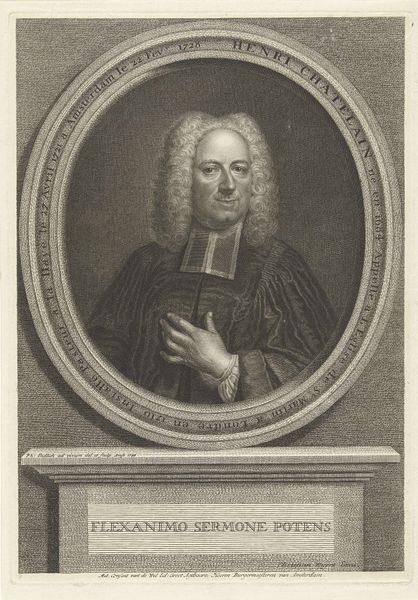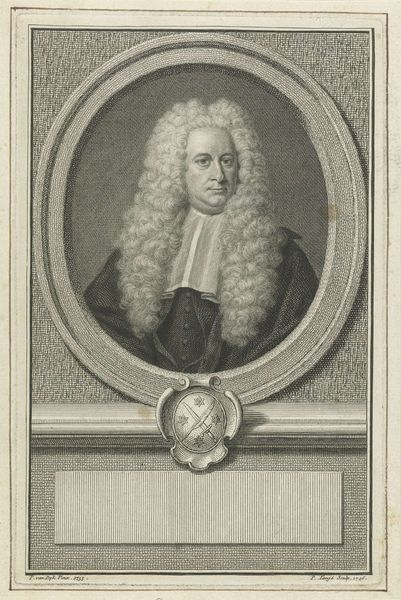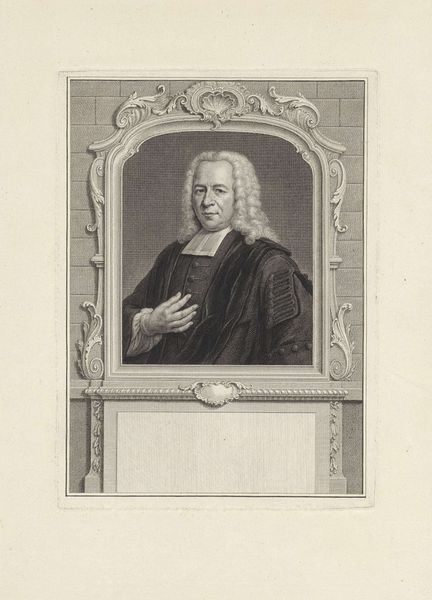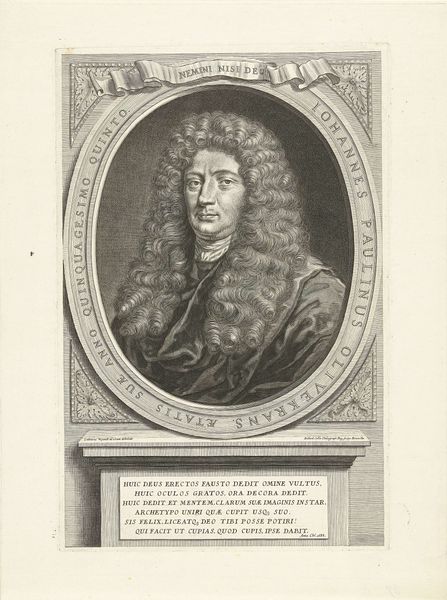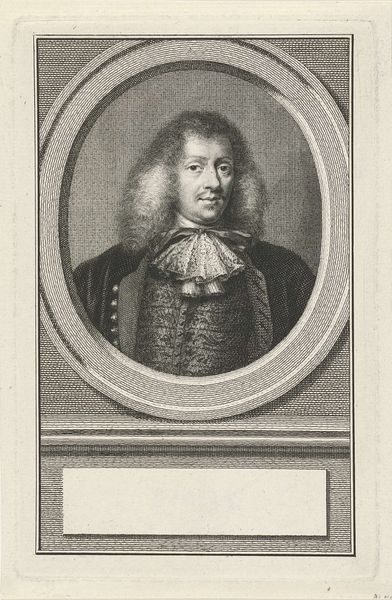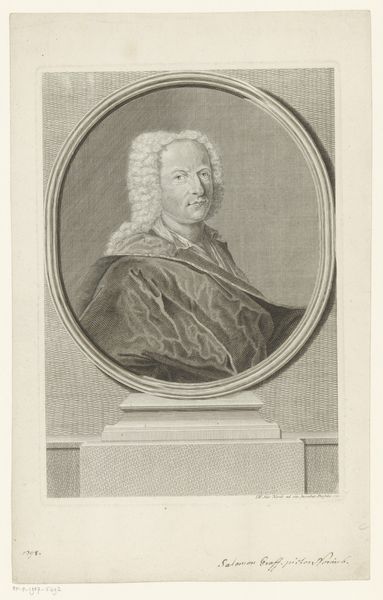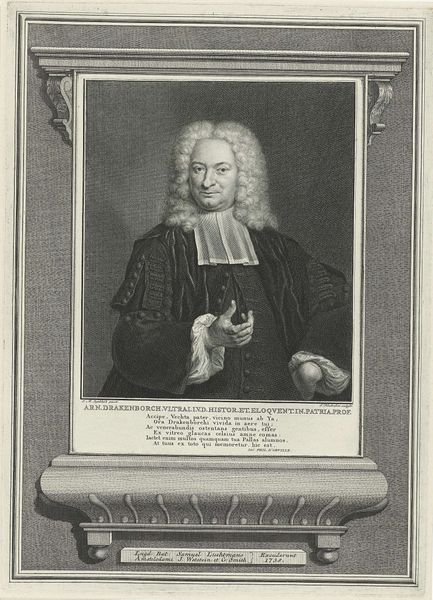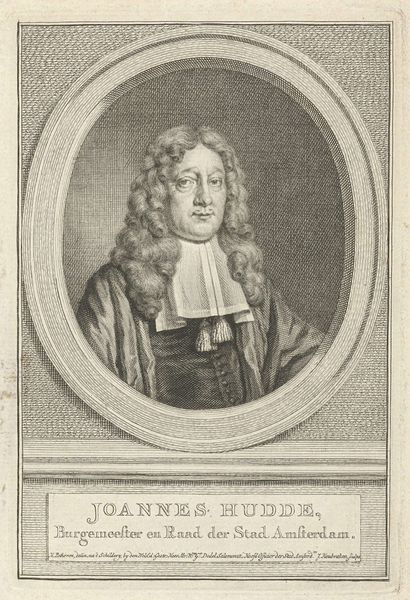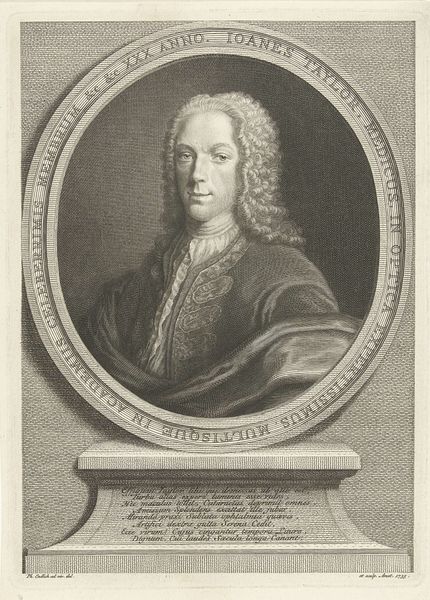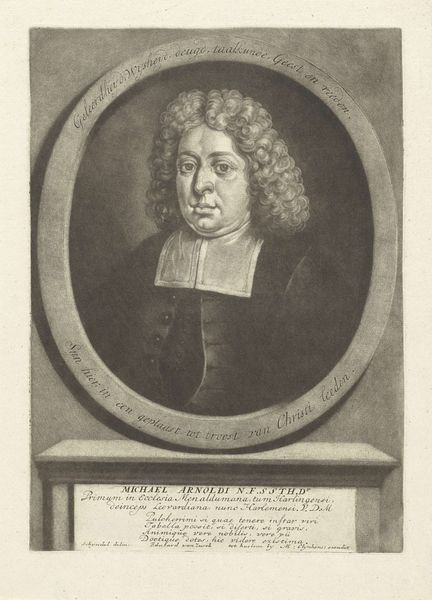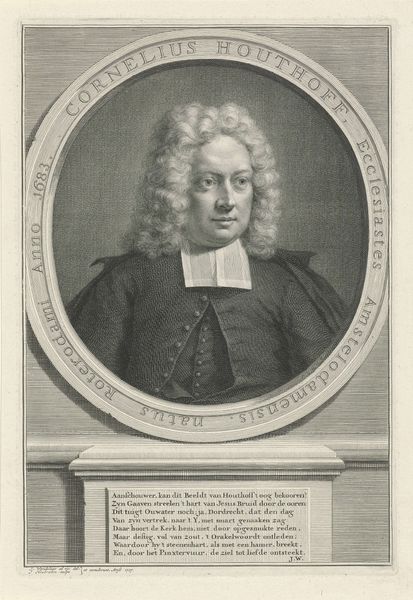
print, engraving
#
portrait
#
baroque
# print
#
engraving
Dimensions: height 313 mm, width 220 mm
Copyright: Rijks Museum: Open Domain
Curator: The precision! The light reflecting off each individual curl...it's a magnificent engraving. Editor: My initial impression is of quiet authority. A man framed, contained almost, yet looking out with self-assurance. It’s imposing, isn’t it? Curator: It is. This is a print of Johannes Noordbeek, created in 1737. The artwork is currently held at the Rijksmuseum. One is immediately struck by the oval composition and the detail afforded by the engraving. Look how the textures interplay! The softness of the hair, the crispness of his collar. Editor: Indeed. He was clearly a figure of some importance in his time. You can see that importance reflected in his attire, his posture, the overall gravitas. Engravings like this one served as a form of early public relations, allowing a wider audience to familiarize themselves with notable figures. He looks every bit the established religious leader. Curator: Note, too, how the inscription below serves to solidify the sitter's identity and credentials. The text and image work together, reinforcing Noordbeek's status through direct labeling and visual presentation. It's very functional; a testament to the Baroque interest in communicating clearly. Editor: Functionality certainly plays a role here, but there’s also an element of celebrating the individual. Consider the historical moment, where increasing emphasis was placed on individuality and reputation, especially among religious and civic leaders. Curator: I see the functionality you point to as vital, a key signifier, which ultimately underscores how his persona itself became a symbolic marker, a representation. It elevates the everyday into the domain of structured meaning. Editor: Absolutely, the encoding is apparent, but also I would say that, this portrait is more than an arrangement of meaningful signals; it also communicates aspects of selfhood during the time, reflecting changes within religious life. Curator: The artist meticulously employs form to reveal the structures underpinning social power, so the emotional expression is a function of form. Editor: Yet that formality offers clues into broader shifts of secular authority, where public image became essential. I look at this image as more than line and form but as a mirror reflecting its moment in history. Curator: Indeed, and perhaps it’s the harmonious convergence of history and art where a more complex beauty lies. Editor: I completely agree. There’s certainly something to be learned in studying history alongside formal arrangement in this baroque piece.
Comments
No comments
Be the first to comment and join the conversation on the ultimate creative platform.
